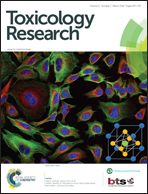The urinary excretion of an organic anion transporter as an early biomarker of methotrexate-induced kidney injury
Abstract
Methotrexate (MTX) belongs to a group of medicines known as antimetabolites. It is commonly used in the treatment of malignant diseases and is prescribed in autoimmune and chronic inflammatory disorders. Along with its effective therapeutic power, MTX has adverse effects on several organs, including the kidney. The organic anion transporter 5 (Oat5) is exclusively localized in the renal apical membrane. Oat5 urinary excretion was proposed as an early biomarker in ischemic and nephrotoxic-induced kidney injury and in renal damage due to vascular calcification in preclinical models. The aim of this study was to evaluate Oat5 renal expression and urinary excretion in rats 48 h after the exposure to different doses of MTX, in comparison with traditional markers of renal injury, such as creatinine and urea plasma levels, protein urinary levels, urinary alkaline phosphatase (AP) activity, fractional excretion of water (FEWater) and renal histology. Male Wistar rats were treated with a single intraperitoneal injection of MTX at different dosages: 40-80-120-180-360 mg per kg b.w. (M40, M80, M120, M180, M360, n = 4, respectively) and experiments were carried out 48 h after MTX administration. Oat5 renal expression was evaluated by western blotting and immunohistochemistry. Traditional parameters were only modified at the higher MTX dose (M360). Conversely, Oat5 urinary excretion was elevated at the middle dose of 80 mg per kg b.w. Oat5 renal expression was modified at the highest dose as well, both in homogenates and in apical membranes. These results suggest that Oat5 urinary excretion might serve as an early biomarker of MTX-induced kidney injury.


 Please wait while we load your content...
Please wait while we load your content...